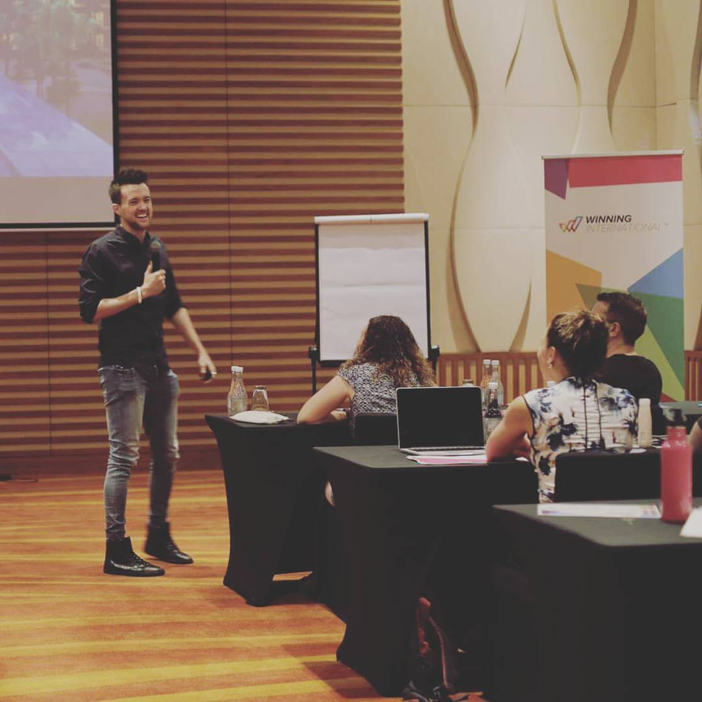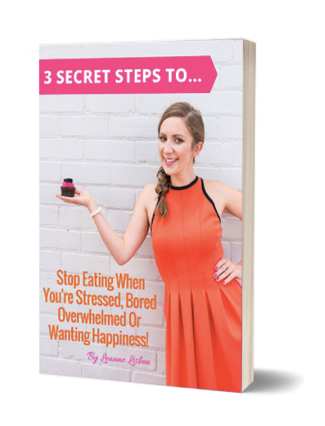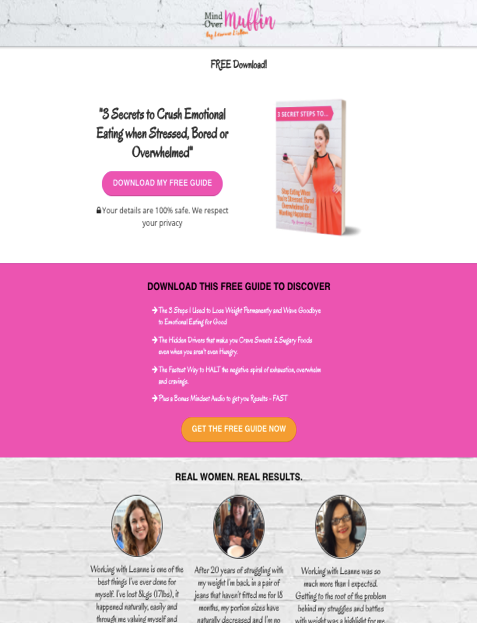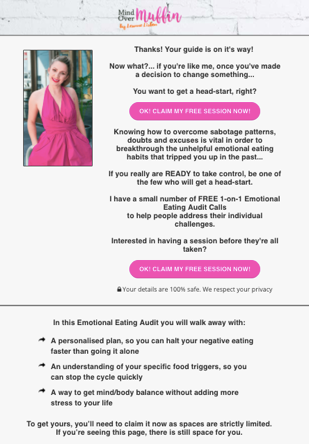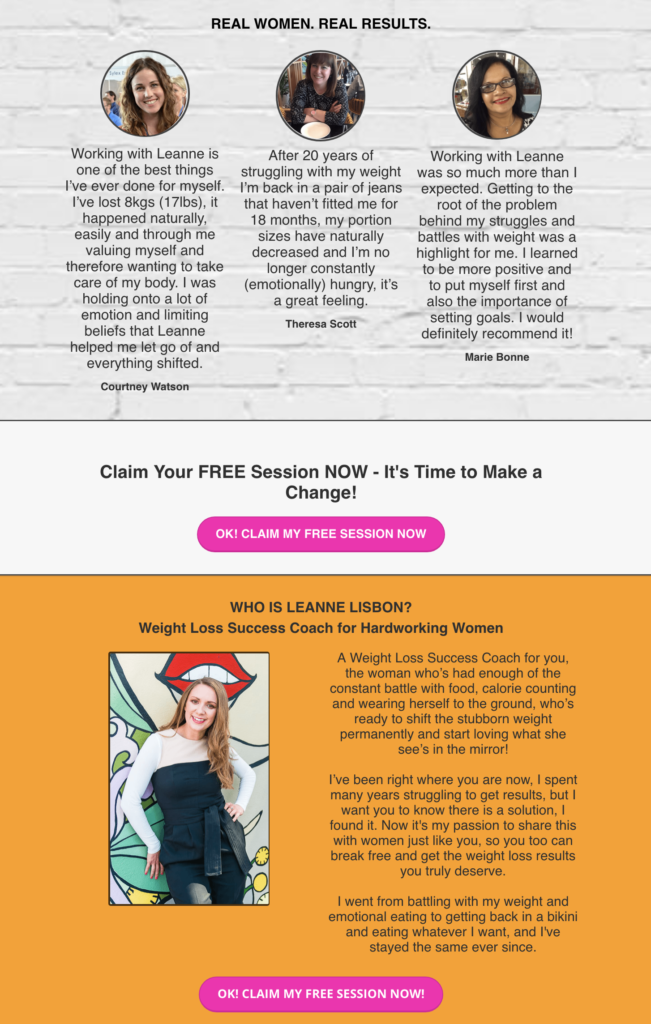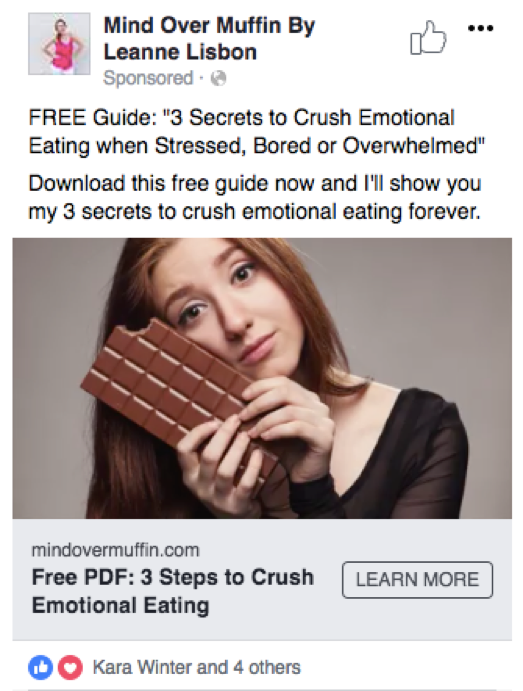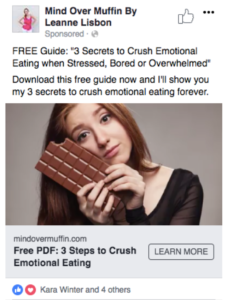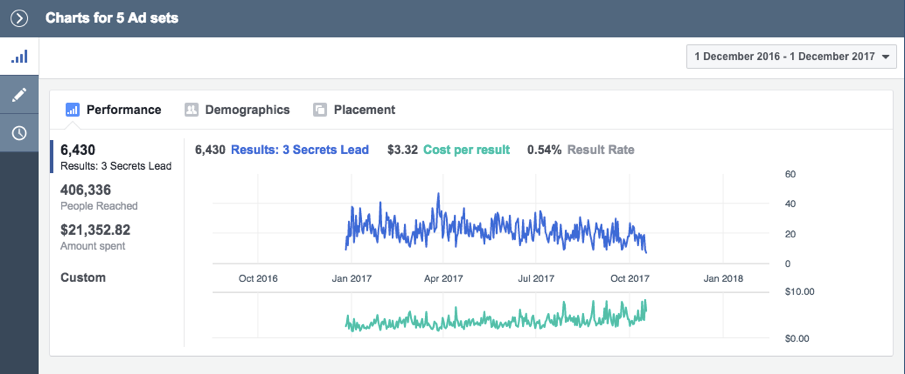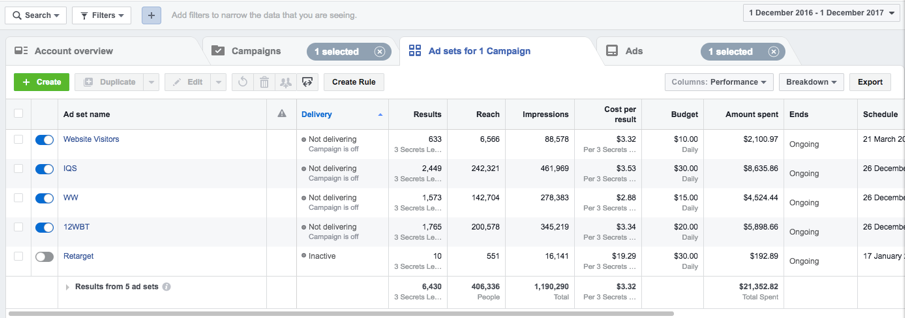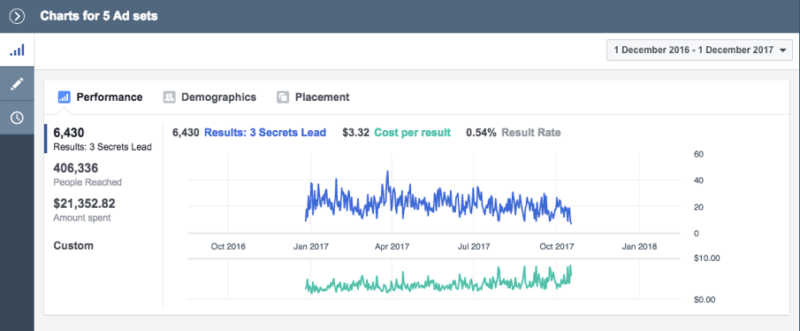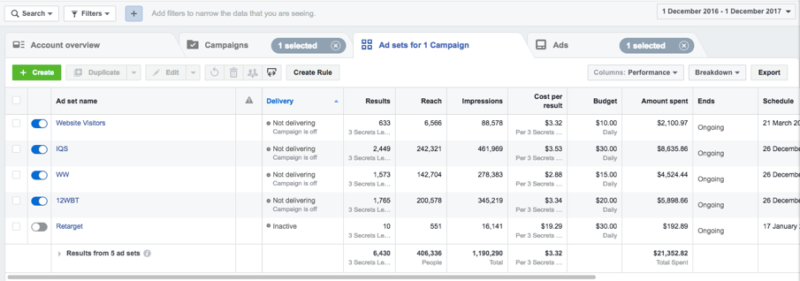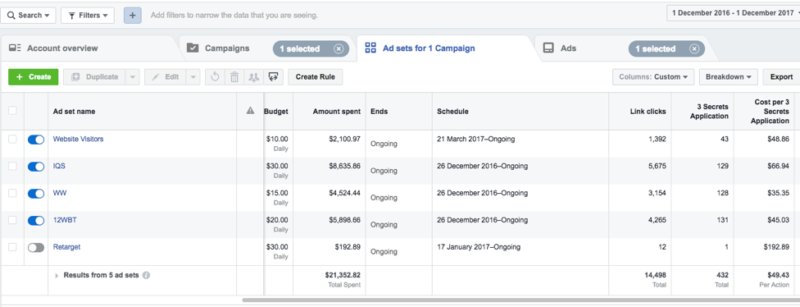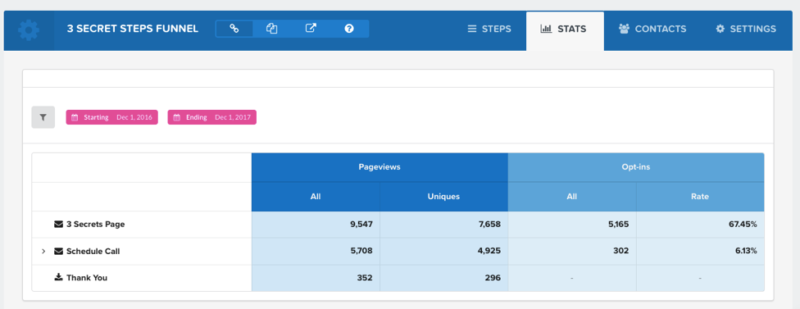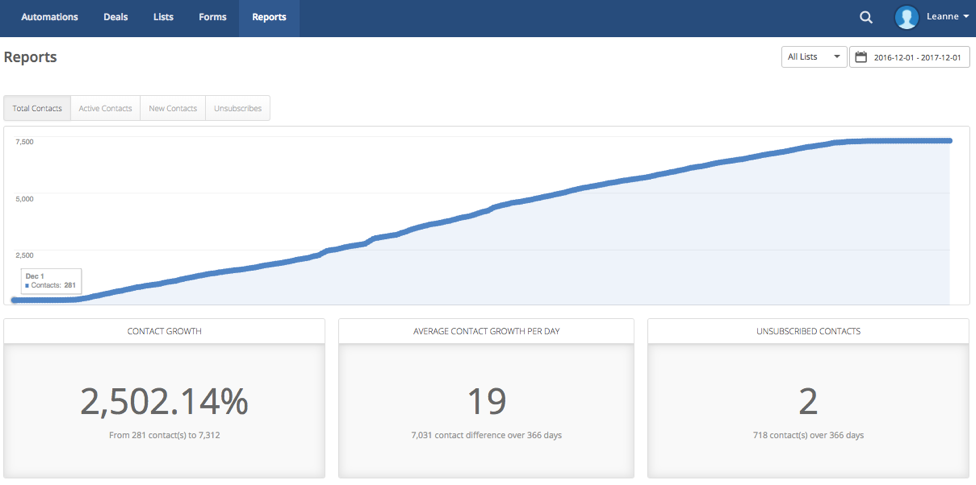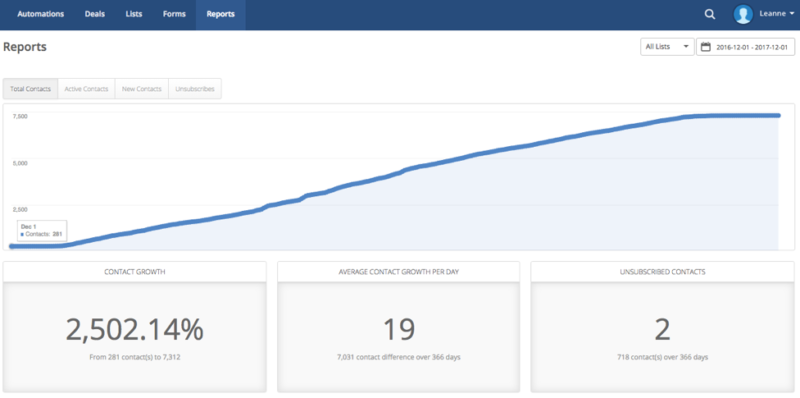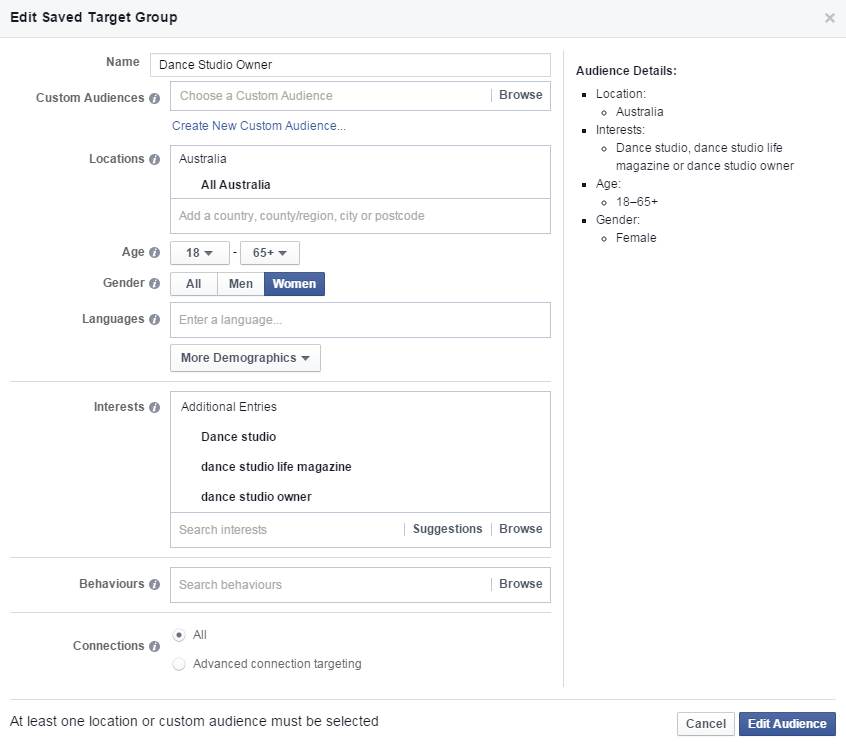Below is an article I wrote on the Clickfunnels Blog in January, 2016. I wanted to repost it here for you – its got same great lessons. Enjoy!
If you’re a Coach, Consultant or Marketer – pay attention.
I want to show you how to leverage Facebook Marketing & ClickFunnels to get more leads & clients, grow your coaching business & generate a crazy ROI.
In this Case Study, I’ve outlined the entire process from strategising & building the right sales funnel for your business, writing converting copy that resonates with your target audience, running Facebook Ads, making sales for your coaching business and everything in between.
Literally.
After spending the last few years running different campaigns and building a bunch of funnels in multiple niches, I wanted to share the best things I’ve discovered to help you maximize your own sales funnel and grow your business.
And there’s no better way to do that then break down a proven, converting funnel.
[Case Study] – The High Ticket Coaching Funnel That Generated a 4,000% ROI
The Business – Winning International

Firstly, let me give you the background on the business.
Winning International is a business founded by Ryan Magdziarz (left) in 2014. Winning trains coaches on how to grow their business & change lives on their way to reaching 7 figures.
This includes many different kinds of coaches such as business, life, health, fitness, financial, dating and more.
Winning International achieves this by offering coaches 2 core, results-based programs – 6 Figure Coach & 7 Figure Coach – for coaches looking to grow their business and impact the world.
Our goal was to generate more leads and increase sales for both programs.
As Winning has an in-house sales team, we decided we would treat leads for both programs the same initially, and have the sales people qualify on each call, to decide which program was right for each person.
The goal for the funnel was to generate Strategy Sessions with as many qualified leads as possible.
The key here was to ensure they were qualified, so we weren’t wasting the time of the sales staff.
With that in mind, here’s what we did:
1. STRATEGY
The Coaching niche Ryan specifically wanted to focus on was Fitness Coaches & Personal Trainers.
This is a competitive niche with a lot of coaching programs targeting PT’s, so we knew we would need great execution from the start.
As far as the funnel goes, there are a few different funnel we had when it comes to generating strategy sessions with qualified leads, including:
1) Webinar Funnel
 Run a paid traffic campaign to a Webinar Funnel and offer a Strategy Session to Webinar interested participants.
Run a paid traffic campaign to a Webinar Funnel and offer a Strategy Session to Webinar interested participants.
2) High Ticket Funnel

Create a video series of valuable content that solves the biggest problems PT’s were having in their business.
Offer a Strategy Session as a Call-To-Action for the interested prospects.
3) Tripwire Funnel
 Offer a lead magnet solving a problem for PT’s, and then Low Ticket Item with a Bonus Strategy Session to prospects in the funnel.
Offer a lead magnet solving a problem for PT’s, and then Low Ticket Item with a Bonus Strategy Session to prospects in the funnel.
The Low Ticket Item would be an extension of the Lead Magnet, to ensure congruence, and then the two coaching programs 6 & 7 figure coach again built on that.
Ultimately all 3 of these options have their own merit, and I believe all 3 of them would work equally as well. Without trying to give a generic marketing answer as to which one we chose – the only thing left to do was, yep – you guessed it – TEST them.
We started with the Tripwire Funnel.
The reason for this is I had actually created a tripwire funnel about 6 months before I started working with Ryan that targeted this same audience.
I had created a Lead Magnet, and a $7 Case Study Tripwire, both for Personal Trainers, that were converting well – so we decided to get straight to testing it for this new project.
When I went to build out this funnel initially, I started with developing a Marketing Hook for a Lead Magnet.
From my research, which included surveying PT’s to find the biggest pain points and problems they had in their business, the most common answer was gaining clients.
I knew being able to solve this problem with some simple advice would make a great Lead Magnet.At the time, I recalled a 9-word email by Dean Jackson that works amazingly well for generating clients from dead leads on an email list, so I created a free report that included this email and showed exactly how to use it. I called the report “Get 10 PT Client’s in 5 Days.”
I called the report “Get 10 PT Client’s in 5 Days.”
I tested this as a Facebook Ad, and it resulted in leads for just $1 each in a competitive niche.
Once I knew this marketing hook converted well, I turned the ads off and set about creating a Tripwire I could use to escalate prospects through the funnel.
From my research, I knew another limitation Personal Trainers had been using Facebook to generate leads. Also, the 9 Word Email wouldn’t really work if you didn’t have a list to begin with.
So I created an opt-in funnel a Personal Trainer could use, that gave away a free workout program. I generated 11 leads for under $30 on Facebook using this process, and I turned these results into a Case Study, which I sold for $7, showing PT’s how to use Facebook and Generate Leads.
When I tested it, it also converted well, and I was acquiring customers at break-even.
There was only one remaining issue at this point – I had no back end, and no intention of creating a coaching program or going any further with the experiment at this point, so I stopped running ads and put the project on the side.
Once I met Ryan and started working with him – we discussed how we could generate more leads and sales for 6 & 7 figure coach.
We brought the same funnel out and made one distinct change to it – we added a bonus strategy session to the funnel for anyone who bought the case study.
This gave both an added incentive to purchase and the strategy sessions we wanted.
Funnel Structure
2. BUILD
I want to break down in detail regarding the specific design, layout, copy & features of the funnel so you can understand how to replicate best it in your own business.
Firstly, when building this out in Clickfunnels, I rolled with the Sell Your Product > Sales Funnel Selection choices.

For the page templates – I chose ‘Simple Two Column Opt In’ for the lead magnet page and Ology Sales for the thank you / sales page to follow.
I love the Ology Sales Template if you have a sales page with long form copy on it. I’ve used it across a bunch of different niches and funnels with great results.
I’ve used it across a bunch of different niches and funnels with great results.

Landing Page
- Design & Layout
With the design of the pages, we chose bright colors consistent with the Winning International branding.
The main ‘conversion’ feature of the opt-in page is the fact its split into two columns. The reason this is advantageous is on mobile; it shows one stacked on top of the other.
This gives the Headline, bullet point copies with benefits to the prospect, immediately followed by the image – which is the Facebook Ad (I discuss the specifics of this further below) – with the input form for the opt-in.
One key measure to consider here is that I left the name & email input on the landing page itself, rather than using a light box or a pop-up. The reason for this is some mobiles don’t work well with popups, so I didn’t want this to effect the conversion. The page converted at around 52% which I was more than happy with.
- Copy
I’m a copywriter, so I wrote all of the copy for the funnel. I didn’t follow any particular formula as such, rather than just:
- Sub Headline – this tells the prospect more about what to expect, or what specifically they are getting from opting into your funnel. In this case, it’s an email marketing strategy.
- Call out your market – it’s more important to have this in your ads specifically, so you should just be stating this here for congruency.
- Marketing Hook / Benefit Laced Headline – Ideally, your target client should know what benefit they are getting just from reading your headline. If they don’t, you will have an immediate negative impact on your conversion rate. After stating this benefit / promise, you need to back it up with how or why it’s possible.
- Bullets – Elaborate on your offer in a clear and succinct manner with some irresistible bullet points to entice your prospect into wanting your offer.
One final point to keep in mind – the best lead magnets, and for that matter marketing offers, are always incredibly specific.
In that case, your copy should be brief, and not over the top.
If you have to write a lot to convince someone they should give you their name and email for a free offer, it’s obviously not specific enough.
This will have an impact on conversions.
 Sales Page
Sales Page
- Design & Layout
The design on the sales page is typical of any long form sales letter you would have seen.
It is a long letter of the text, with a specific structure here to set out all the information cleanly.
I will briefly touch on some of the key aspects of this page.
The sales page converted at 5% from just the opt-in, without any email follow up. We also continued to ensure funnel congruency by keeping the same colors from the landing page, throughout the rest of the funnel.
- Copy
We had the following structure with the sales letter in terms of sales copy:
- Acknowledgment – firstly, acknowledge the prospect for having downloaded your first offer. Far too many people ignore this critical part and move straight into the sale for the next step on their value ladder. This can get prospects off on the wrong foot.
- Bridge – to extend on point (a), make sure you bridge the prospects from the report to what they need next. Acknowledge them for taking the first step, and then gently explain why they are missing a piece in the puzzle and how they can get to the next level.
- Headline – this goes without saying. Explain what they are going to get with benefit / promise based headline.
- Body of the Sales Letter – I won’t go into every little detail with the letter, but my advice is to follow a formula like PASPA when writing sales copy:
– Problem
– Aggravation
– Solution
– Proof
– Action
If you can remember a formula like that, it will help you to write copy that converts even cold traffic.
- Testimonials – I’ve jumped from the body into the ‘Proof’ aspect of the above formula. Make sure you include testimonials from previous clients to build trust.
- Bullets – Add bullet copy into your sales letter. You can add the most important benefits in as a bullet, which brings attention from the reader and gives extra punch to your sales message.
- Call to Action – Make sure you have solid CTA’s telling the prospect to take action and buy your offer. This goes without saying.
- Guarantee – Always add a guarantee, whether it be 30 or 60 days, to stand behind your product. It adds trust & credibility, and will help to increase your conversion rate.
- Bonus – I add a bonus to all offers to increase desire. Don’t overdo this with tripwire offers. I see people add a lot of bonuses in and this can make it harder to sell other offers in your funnel, as you train prospects to expect a lot for not much money. In this funnel, we gave a free strategy session with the case study.
- Post Script – Make sure you add P.S. & P.P.S to your offers, as some people will skim your entire sales letter and only read what’s below your final sign off. Include a summary of the offer and the bonus here.
From here, we only had the Order Form & Thank You Page remaining. The order form was standard and maintained the same design aspects as above.
The Thank You Page had a video of Ryan, thanking them for purchasing the case study and explaining that a sales person would be in touch to organize their strategy session.
With the funnel built out and ready to run, all we had to do was set up some Facebook Ads, and we could get started.
3. FACEBOOK CAMPAIGN
Creatives
For the Facebook Campaign, we already had the offer & the marketing hook. Given this, the copy was very straight forward to put together. The text at the top of the ad was simply:
“If you’re a Personal Trainer and want 10 New Clients in the next 5 Days – download this Email Template NOW!”
With the Headline being: “Free Email Template”. Both of these pieces of copy are incredibly clear and concise, which, when paired with the right targeting lead to a high Click-Through-Rate (CTR).
For the image, I had been experimenting with cartoons in a few other campaigns and decided to try a cartoon holding weights with the Marketing Hook in the image, as you can see below.

It turns out these ads performed very well, with a high relevance score, low negative feedback, and good opt-in rates.
Targeting
For the targeting, I created a conversion campaign and initially created two ad sets. These were for each audience I was targeting, which happened to be two Facebook pages that already had an audience of Personal Trainers.
When I run ads, I create each ad set with just one interest, so I can see which interest leads to the highest conversions for when the campaign gets scaled.
After this was set up, we started the campaign and ran it for the first few weeks in December 2015.
4. RESULTS
After 2 weeks of running the campaign, we were able to analyze the results and figure out whether anything needed to be changed or tweaked. The results we achieved and ROI generated proved the campaign a great success.
Facebook Ad Manager

We generated nearly 500 leads from $935 in ad spend. With a lead cost of less than $2, and high CTR’s & Relevance Scores on the ads, the cartoon image and copy on the ads were right on point.
The landing page converted cold traffic at 51% that was a great result without any optimization. This screenshot was taken a few days earlier, but tells the story quite accurately:

Of the 51% of people who landed on the thank you page, 5% of them bought the $7 case study, which provided us with phone numbers, to pass on to the sales staff who then rang the customers and booked them in for a strategy session.
The breakdown of numbers, from December 1st to 17th shows:
– 492 Conversions: 469 Leads & 23 Sales
– $935 spent on Ads
– 23 Sales @ $7 = $161 Revenue
Total Ad Cost = 935 – 161 = $774
Not everyone from the 23 sales was booked in for a call. Naturally some people weren’t interested, which is to be expected.
Of those the Winning Team spoke with, 4 Sales were made across the two programs, coming to a total of $32,000.
This produced an ROI of 4,034% – which of course is a great result.
This case study only covers the first two weeks in December.We will conduct more testing, optimization and strategy call in the weeks and months to come, to improve the ROI.
We will conduct more testing, optimization and strategy call in the weeks and months to come, to improve the ROI.
5. ANALYSIS
After breaking down this funnel and spending hours chewing over the data, I came to the conclusion there were 5 main reasons why this strategy worked so well.
- Clearly Defined Starving Market
Firstly, and most importantly, this market is hungry for the solution. Personal Training is an incredibly competitive niche, so it is an evergreen market that will always need to learn how to generate leads and acquire clients.
This is the differentiating factor in most successful marketing campaigns.
While there are tons of other aspects of success, as you can see above, selling something that a market segment is desperate for will always be the most important part of a campaign.
- Relevant Offers
Both the Lead Magnet and Case Study Tripwire’s solved the biggest problems Personal Trainers have and are incredibly relevant offers.
The first shows how to get more clients by Email, and the second by Facebook.
The first thing you need to consider when a campaign flops, is, are the offers relevant? Do they solve the biggest problem my market has?
Once you can do this, you are well on your way to success.
- Sharp, Specific Ad Targeting
With the Targeting on the Ads, I selected a hyper-responsive audience that I knew from my research was full of Personal Trainers.
This meant that regardless all of the offers and copy and marketing pieces, I was getting in front of the right people. I can’t understate how important this is.
- High Converting Copy
There will never be a substitute for great sales copy.
Having great copy in your sales funnel is worth every cent it costs to have a great copywriter produce it. Never underestimate it.
Never underestimate it.
- Highly Skilled Sales Team
I have to recognize Ryan and his incredibly skilled Sales Team.
These results wouldn’t have been possible without it. Having a sales team that produces great results is essential to any high ticket sales funnel.
Split Testing
You may look at the above and wonder why I didn’t run one split test (at this point in time). The reason is very simple. I believe split testing is one of the BIGGEST wastes of time when you first build a funnel.
This may be controversial, but far too often I see people split testing either elements that don’t make a statistically significant difference, or they aren’t running enough traffic to pages to determine if the split test has an impact.
If you complete your research properly and know your market well, you shouldn’t have to run a split test until you’ve spent more than $1,000 in traffic and are looking to optimize your funnel.
Which I will be doing moving forward.
6. CONCLUSION
So there you have it.
Inside a High Ticket Coaching Funnel with a 4000% ROI.
I’d love to hear your thoughts & questions in the comments below!


